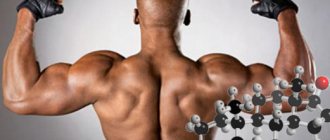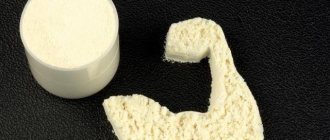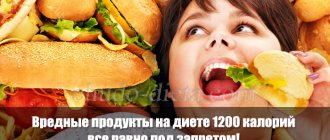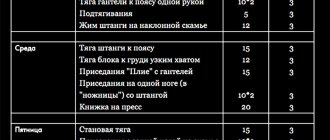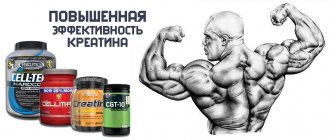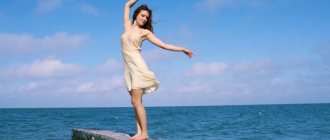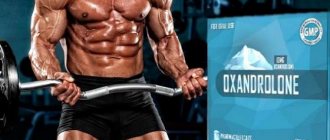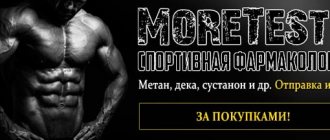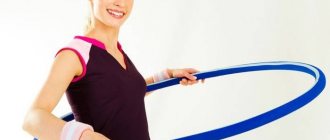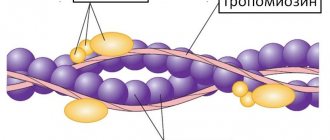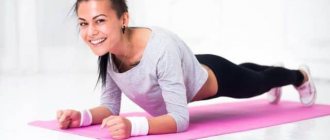When people start discussing sports supplements, you often hear the terms “proanabolic”, “prohormone” and “prosteroids”.
It must be said that they all mean the same thing and refer to the same product. Prohormones are precursors or building blocks. Once in the human body, these substances are converted into testosterone. Let's look at what prohormones are and in more detail. Most prohormones are inactive and have weak anabolic properties. From this we can conclude that prohormones can produce their full effect only after conversion into the male hormone, which is their active form. Theoretically, thanks to prohormones, it is possible to increase testosterone levels; the effectiveness of the drugs is negatively affected by chemical transformation. It is this feature of prohormones that limits their effectiveness. According to recent studies, only 10 to 15 percent of prohormones can be converted into male hormone. Of course, this is a very small part of the actual dosage.
The most common precursors in the human body are androstenedione, dehydropianrosterone and norandrostenedione. All of these drugs are natural and can be purchased without prescriptions. They are not classified as prohibited drugs, unlike anabolic drugs. Prohormones are completely legal, but at the same time they are ineffective compared to traditional steroids. They act as a legal and safe alternative to AAS.
Prohormones[edit | edit code]
Scheme of hormonal interaction
Prohormones
- substances that are precursors of hormones, while in themselves they do not have biological activity. The term prohormones was first used in medicine in the mid-20th century. A large number of natural prohormones are found in the human body: proinsulin is a precursor of insulin, thyroxine is a precursor of triiodothyronine, etc.
In bodybuilding, prohormones refer to prosteroids
, which, when entering the body, are converted, usually due to the enzymatic cleavage of part of the molecule, into active anabolic steroids, such as testosterone, etc. Although the concepts of prohormones and prosteroids are not synonymous, as many believe. Prosteroids are just one type of prohormones.
Since 2011, prohormones have practically disappeared from the sports nutrition market, which is associated with a massive ban on import into Russia, as well as their production.
Prohormones in bodybuilding[edit | edit code]
In the last two decades, prohormones (prosteroids) have been actively used by athletes in bodybuilding, powerlifting and other strength sports to increase muscle mass and strength. Initially, the main advantage of prohormones was their legal status, since they are not formally classified as anabolic steroids. However, in recent years, many prohormones have been listed along with steroids and their circulation is limited.
Today, manufacturers are constantly working to create new prohormones that are not yet included in the list of prohibited ones, but 1-2 years pass and the product is withdrawn from circulation. Thus, there is a constant race between companies and the state, with the latter lagging behind for some time.
As a rule, manufacturers claim that their prohormones are much safer than steroids, but in reality this is not always the case. Firstly, the main goal of the manufacturer is not to create a safer product, but to synthesize a new formula that would have an anabolic effect and would not be included in the prohibited list, while the issue of safety fades into the background. Secondly, most prohormones are much weaker than anabolic steroids, and this explains the lower incidence of side effects. From which we can conclude that prohormones are no more safe than steroids in moderate doses.
The constant race between the manufacturer and government control leads to the appearance of prohormones on the market that do not undergo any clinical trials, and it often turns out that these supplements have quite serious side effects that are more severe than classic steroids. It should be noted that prohormones have the status of a food additive, which means that the quality control of these products is much lower than that of pharmaceuticals.
Conclusion[edit | edit code]
Prohormones do not have pharmacological advantages compared to anabolic steroids and are usually much weaker than the latter, while side effects occur quite often due to poor quality control and an almost complete lack of research. There is a possibility of delayed side effects, possible carcinogenic activity, and so on.
https://youtu.be/OO7ohKUjW30
Rating of designer steroids
It’s worth mentioning right away that you won’t find cheap drugs, and the best prohormones will generally cost a lot of money. The production of these drugs is quite expensive, and if you want to get a quality product that is safe and works, then be prepared to spend money. The price will largely depend on the composition of the drug - it can be single-component, or it can consist of several compounds. Prohormones are divided into classes - from 1 to 4, depending on their strength. The best designer steroids include several synergistic (enhancing each other’s action) components, and the most extreme ones can consist of 2-5 prohormones (level 4 prohormones)!
Not so long ago, another drugs related to prohormones appeared - SARMs - selective androgen receptor modulators. They are similar or identical in action to anabolic steroids, but differ in formula. This is precisely their advantage - they are not subject to aromatization and are not able to be converted into forms hazardous to health. You can buy SARMs and use them together with DS, such combinations are very common now. Some manufacturers even combine SARMs and DS in one drug.
Prohormone rating
When purchasing prohormones, remember to use them wisely. Only with them you will not be able to achieve high-quality results. DS is only part of the course; do not forget to buy antiestrogens, hepatoprotectors and other supporting drugs.
Steroids
- these are synthetic derivatives of the dough-ste-ro-na molecule, which contribute to the synthesis of organic tissue, the growth of strength indicators and, in general, a positive effect -vayu-sya on the sports-tiv-nyh ha-rak-te-ris-ti-kah of the athlete.
But they are prohibited drugs with a huge list of side effects
, which is why testosterone boosters and pro -mountains. Bus-te-ry test-to-ste-ro-na are substances that stimulate the secretion of endo-gen-no-go test-to-ste-ro-na, and pro-gor-mo -we are the pre-six-veins of hormones, from which they then syn-te-zi-ru-t. In fact, both types of drugs stimulate increased secretion of the endo-gene test-ste-ron. Or at least they should encourage it.
The prohormones of androgens are de-hydro-epi-an-dro-sterone, alphadione and alphadiol. By themselves, they weakly bind to the an-dro-gen-ny re-tsep-to-ra-mi, therefore they are capable of having a significant effect on me -those processes only after conversion into test-sterone or estradiol. It should be noted that prohormones work in an es-test-venous manner, however, they have a significant impact on the level of test-ste-ro-na they in an es-test-venous manner. Under certain conditions, they can only have an effect on the female body. For men, 95% of tes-to-ste-ro-na you-ra-ba-you-va-yut-sya tes-ti-ku-la-mi. However, within the framework of age-related therapy, they tried to use prohormones both to improve the condition of women and to improve the condition of men. And it was precisely as a result that these pre-pa-ra-you gained popularity among athletes.
Popular prohormones[edit | edit code]
4-androstenedione
- Converted to testosterone
- Studies show that the conversion rate does not exceed 6%, which means that only a twentieth of the supplement is converted into testosterone.
- A high level of aromatization, that is, there is a high probability of developing gynecomastia, edema and other side effects.
- High androgenic activity.
4-androstenediol (4-AD)
- Converted to testosterone
- Conversion rate 15.76%
- Does not convert to estrogens
- It has less androgenic activity compared to 4-androstenedione, since it is not converted to dehydrostestosterone.
19-norandrostenedione
- Converts to nandrolone (retabolil)
- Anabolic activity almost like testosterone
- Does not convert to estrogens
- Low androgenic activity
19-norandrostenediol
- Also converts to nandrolone
- Conversion rate slightly higher than previous prohormone
1-androstenediol (1-AD)
- Converts to 1-testosterone (dihydroboldenone)
- It has 7 times greater anabolic activity and 2 times greater androgenic activity compared to testosterone.
- Almost completely converted to active form when passing through the liver
- Does not aromatize (does not convert to estrogens)
1,4-androstadienedione (1,4 AD)
- Converts to boldenone
- High bioavailability when taken orally
- Low degree of aromatization to estrogen (50% less compared to testosterone)
- Low androgenic activity
1-testosterone (1-T)
- Similar to testosterone
- Has 4 times greater bioavailability when taken orally compared to testosterone
- Does not convert to estrogens
- Actually not a prohormone
Scientific review[edit | edit code]
Testosterone and growth hormone are the main hormones in terms of muscle growth (anabolic processes), increasing muscle strength, slowing down catabolic reactions, and reducing the proportion of body fat.[1][2][3][4][5][6][ 7] In addition, testosterone is responsible for some male characteristics (such as hair growth in certain areas of the body, a rough voice, etc.).[8] It is widely known that athletes often take large doses of anabolic steroids in order to improve adaptation to training, increase muscle mass and/or speed up recovery during periods of intense training.[5][6][9]
Research has generally shown that taking anabolic steroids and growth hormones does promote gains in muscle mass and strength.[10][11][12][13][14][15][16][17][18][19] However, this practice has a number of side effects. There are known cases of hormonal dysfunction, liver dysfunction, hyperlipidemia (increased levels of lipoproteins in the blood). In addition, taking steroids increases the risk of cardiovascular disease and inappropriate behavior (so-called "steroid rage").[20][21][22][23] Some of these effects are irreversible, especially in women.[24] For this reason, most sports organizations have banned the use of anabolic steroids. Their use should be avoided. The only exception is the use of steroids as prescribed by a physician to treat certain diseases.
Prohormones (androstenedione, 4-androstenediol, 19-nor-4-androstenedione, 19-nor-4-androstenediol, 7-keto-dehydroepiandrosterone (DHEA), dehydroepiandrosterone (DHEA), etc.) are essentially precursors of testosterone and other anabolic steroids, while they are of natural origin. It is because of their natural origin that they have become popular among bodybuilders. Nowadays, quite a large number of over-the-counter supplements contain prohormones.
There is currently some evidence supporting the ability of prohormones to increase testosterone levels in the blood.[25][26] But there is virtually no evidence that prohormone supplementation can improve adaptation to exercise in young men with normal hormone levels. Most studies provide evidence that prohormones have no effect on testosterone levels, and some of them can increase estrogen levels and reduce high-density lipoprotein (HDL) levels.[27][28][29][30][31][ 32]
Thus, although prohormones can be used to maintain male hormone levels in older age groups, they do not appear to be effective for use in athletes. In addition, most sports organizations have banned the use of prohormones as “steroid-like substances.” It should be remembered that taking prohormones will test positive for anabolic steroids. It is the intentional and unintentional use of prohormones (as part of various supplements) that has recently become the cause of many positive tests among athletes.
Thus, you should carefully study the composition of supplements for the presence of prohormones. This is especially true for athletes whose sport prohibits the use of these substances. For example, some prohormones have been prohibited for sale in the United States since the Anabolic Steroid Control Act was passed in 2004. The only exception is dehydroepiandrosterone (DHEA), which has undergone many clinical trials in older age groups.
Recently, a new way to increase endogenous testosterone levels has been found - blocking aromatase activity.[33] Two studies examined the effects of aromatase inhibitors (androst-4-ene-3,6,17-trione)[34] and (hydroxyandrost-4-ene-6,17-dioxo-3-THP ether and 3,17-diketo -androst-1,4,6-triene).[35] In both experiments, a significant increase in dihydrotestosterone levels was recorded. The effect of supplementation on lean muscle mass gain was not tested in one of the experiments,[34] and no changes were noted in the other.[35]
Prohormones: effectiveness
Testosterone and estrogen levels are known to decline with age. In the same way, the level of prohormones decreases. And since prohormones are precursors to test-ste-ron and estrogen, it was decided to conduct a series of studies on the effectiveness of use prohormones to stimulate their levels –
.
Effective-tiv-ny-mi do-za-mi de-gid-ro-epi-an-dro-ste-ro-na for women during the men-no-pause
were 50 mg/day. Even doses of 100 mg/day turned out to be ineffective for men. Ineffective-for-yourself and a combination of de-hydr-ro-epi-an-dro-ste-ro-na and strong tr-ni-ro-vok. But it was possible to achieve a decrease in high-density lipoproteins, which, fortunately, increased the risk of developing heart disease.
However, the scientists did not give up! It is known that testosterone promotes the growth of strength indicators, hypertrophy of muscle mass and utilization of subcutaneous fat cells –
.
But prohormones stimulate the growth of test-to-ste-ro-na only in women, so it was decided to increase the dosage -
. An increase in the level of tes-to-ste-ro-na in young men was recorded at dosages of de-hydro-epi-an-dro-ste-ro-na 200–300 mg/day. And, it would seem, you can start to rejoice, but that’s not the case! Pro-hor-mons stimulate the growth of not only test-ste-ro-na, but also estrogen, therefore, along with the increase in the level of test-ste-ro- Estrogen levels also increased. And, as you know, the relative level of hormones has a fundamental significance.
Sources[edit | edit code]
- Bhasin S, Woodhouse L, Casaburi R, Singh AB, Mac RP, Lee M, Yarasheski KE, Sinha-Hikim I, Dzekov C, Dzekov J, Magliano L, Storer TW: Older men are as responsive as young men to the anabolic effects of graded doses of testosterone on the skeletal muscle. J Clin Endocrinol Metab 2005, 90(2):678-88.
- Limbird TJ: Anabolic steroids in the training and treatment of athletes. Compr Ther 1985, 11(1):25-30.
- Lukas SE: Current perspectives on anabolic-androgenic steroid abuse. Trends Pharmacol Sci 1993, 14(2):61-8.
- Sattler FR, Castaneda-Sceppa C, Binder EF, Schroeder ET, Wang Y, Bhasin S, Kawakubo M, Stewart Y, Yarasheski KE, Ulloor J, Colletti P, Roubenoff R, Azen SP: Testosterone and growth hormone improve body composition and muscle performance in older men. J Clin Endocrinol Metab 2009, 94(6):1991-2001.
- ↑ 5,05,1 Storer TW, Woodhouse L, Magliano L, Singh AB, Dzekov C, Dzekov J, Bhasin S: Changes in muscle mass, muscle strength, and power but not physical function are related to testosterone dose in healthy older men . J Am Geriatr Soc 2008, 56(11):1991-9.
- ↑ 6.06.1 Wagner JC: Enhancement of athletic performance with drugs. An overview. Sports Med 1991, 12(4):250-65.
- Yarasheski KE: Growth hormone effects on metabolism, body composition, muscle mass, and strength. Exerc Sport Sci Rev 1994, 22:285-312.
- Kuhn CM: Anabolic steroids. Recent Prog Horm Res 2002, 57:411-34.
- Hoffman JR, Kraemer WJ, Bhasin S, Storer T, Ratamess NA, Haff GG, Willoughby DS, Rogol AD: Position stand on androgen and human growth hormone use. J Strength Cond Res 2009, 23(5 Suppl):S1-S59.
- Bross R, Casaburi R, Storer TW, Bhasin S: Androgen effects on body composition and muscle function: implications for the use of androgens as anabolic agents in sarcopenic states. Bailliers Clin Endocrinol Metab 1998, 12(3):365-78.
- Sattler FR, Jaque SV, Schroeder ET, Olson C, Dube MP, Martinez C, Briggs W, Horton R, Azen S: Effects of pharmacological doses of nandrolone decanoate and progressive resistance training in immunodeficient patients infected with human immunodeficiency virus. J Clin Endocrinol Metab 1999, 84(4):1268-76.
- Ferrando AA, Sheffield-Moore M, Paddon-Jones D, Wolfe RR, Urban RJ: Differential anabolic effects of testosterone and amino acid feeding in older men. J Clin Endocrinol Metab 2003, 88(1):358-62.
- Meeuwsen IB, Samson MM, Duursma SA, Verhaar HJ: Muscle strength and tibolone: a randomized, double-blind, placebo-controlled trial. Bjog 2002, 109(1):77-84.
- King DS, Sharp RL, Vukovich MD, Brown GA, Reifenrath TA, Uhl NL, Parsons KA: Effect of oral androstenedione on serum testosterone and adaptations to resistance training in young men: a randomized controlled trial. Jama 1999, 281(21):2020-8.
- Carter WJ: Effect of anabolic hormones and insulin-like growth factor-I on muscle mass and strength in elderly persons. Clin Geriatr Med 1995, 11(4):735-48.
- Soe M, Jensen KL, Gluud C: . Ugeskr Laeger 1989, 151(10):610-3.
- Griggs RC, Pandya S, Florence JM, Brooke MH, Kingston W, Miller JP, Chutkow J, Herr BE, Moxley RT: Randomized controlled trial of testosterone in myotonic dystrophy. Neurology 1989, 39(2 Pt 1):219-22.
- Crist DM, Stackpole PJ, Peake GT: Effects of androgenic-anabolic steroids on neuromuscular power and body composition. J Appl Physiol 1983, 54(2):366-70.
- Ward P: The effect of an anabolic steroid on strength and lean body mass. Med Sci Sports 1973, 5(4):277-82.
- Varriale P, Mirzai-tehrane M, Sedighi A: Acute myocardial infarction associated with anabolic steroids in a young HIV-infected patient. Pharmacotherapy 1999, 19(7):881-4.
- Gruber AJ, Pope HG Jr: Psychiatric and medical effects of anabolic-androgenic steroid use in women. Psychother Psychosom 2000, 69(1):19-26.
- Lamb DR: Anabolic steroids in athletics: how well do they work and how dangerous are they? Am. J Sports Med 1984, 12(1):31-8.
- Salke RC, Rowland TW, Burke EJ: Left ventricular size and function in body builders using anabolic steroids. Med Sci Sports Exerc 1985, 17(6):701-4.
- Kibble MW, Ross MB: Adverse effects of anabolic steroids in athletes. Clin Pharm 1987, 6(9):686-92.
- Brown GA, Martini ER, Roberts BS, Vukovich MD, King DS: Acute hormonal response to sublingual androstenediol intake in young men. J Appl Physiol 2002, 92(1):142-6.
- Brown GA, McKenzie D: Acute resistance exercise does not change the hormonal response to sublingual androstenediol intake. Eur J Appl Physiol 2006, 97(4):404-12.
- Broeder CE, Quindry J, Brittingham K, Panton L, Thomson J, Appakondu S, Breuel K, Byrd R, Douglas J, Earnest C, Mitchell C, Olson M, Roy T, Yarlagadda C: The Andro Project: physiological and hormonal influences of androstenedione supplementation in men 35 to 65 years old participating in a high-intensity resistance training program. Arch Intern Med 2000, 160(20):3093-104.
- Ballantyne CS, Phillips SM, MacDonald JR, Tarnopolsky MA, MacDougall JD: The acute effects of androstenedione supplementation in healthy young males. Can J Appl Physiol 2000, 25(1):68-78.
- Brown GA, Vukovich MD, Sharp RL, Reifenrath TA, Parsons KA, King DS: Effect of oral DHEA on serum testosterone and adaptations to resistance training in young men. J Appl Physiol 1999, 87(6):2274-83.
- van Gammeren D, Falk D, Antonio J: Effects of norandrostenedione and norandrostenediol in resistance-trained men. Nutrition 2002, 18(9):734-7.
- Van Gammeren D, Falk D, Antonio J: The effects of supplementation with 19-nor-4-androstene-3,17-dione and 19-nor-4-androstene-3,17-diol on body composition and athletic performance in previously weight-trained male athletes. Eur J Appl Physiol 2001, 84(5):426-31.
- Pipe A: Effects of testosterone precursor supplementation on intensive weight training. Clin J Sport Med 2001, 11(2):126.
- Mauras N, Lima J, Patel D, Rini A, di Salle E, Kwok A, Lippe B: Pharmacokinetics and dose finding of a potent aromatase inhibitor, aromasin (exemestane), in young males. J Clin Endocrinol Metab 2003, 88(12):5951-6.
- ↑ 34,034,1 Rohle D, Wilborn C, Taylor L, Mulligan C, Kreider R, Willoughby D: Effects of eight weeks of an alleged aromatase inhibiting nutritional supplement 6-OXO (androst-4-ene-3,6,17-trione ) on serum hormone profiles and clinical safety markers in resistance-trained, eugonadal males. J Int Soc Sports Nutr 2007, 4:13.
- ↑ 35,035.1 Willoughby DS, Wilborn C, Taylor L, Campbell W: Eight weeks of aromatase inhibition using the nutritional supplement Novedex XT: effects in young, eugonadal men. Int J Sport Nutr Exerc Metab 2007, 17(1):92-108.
